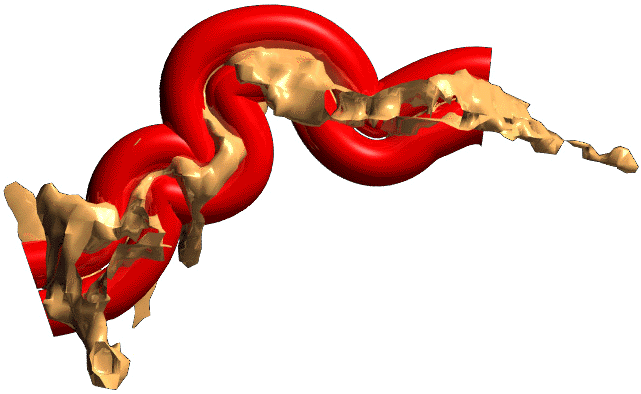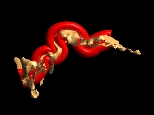
 |
Mathematical and Computer Modelling
|
Mathematical and computer models are important tools that are available to investigate natural phenomena. They can be used to model many systems. In this thesis, mathematical models are developed, implemented and applied to research involving the human brain and in particular, the human visual cortex. The visual cortex constitutes a relatively large part of the cerebral cortex. It is often used in investigations of the human brain because conclusions regarding the visual cortex can be extended to other regions of the brain. Virtually all information from the visual system is recognised as first being processed by the primary visual cortex and is then passed to other regions of the brain involved in more complex processing.
The primary visual cortex has a retinotopic mapping in that one spot in the retinal visual field maps directly to a spot on the primary visual cortex. However, there is disagreement as to the amount of cortex that is allocated to the representation of central vision or other portions of the visual field. A mathematical formulation of this mapping is presented and mapping functions which transform the surface representing the retina to the surface representing the visual cortex are developed.
If the head is modelled as three concentric spherical shells and neural sources of brain activity are modelled as dipoles, then a mathematical model which incorporates biophysical properties can be used to estimate the location of sources which generate a set of electrical potentials measured on the surface of the scalp. This model is known as dipole source localisation. The forward problem, which is the prediction of a potential distribution due to a given electrical source is implemented, and the inverse problem, which is to determine a dipole source that is the best generator of a given potential distribution is solved in the least squares sense. Monte Carlo simulations and mathematical analysis show that the optimal reference electrode to use in dipole analysis is a weighted version of the common average reference. Monte Carlo simulations are also used to investigate the accuracy of confidence regions surrounding the estimated dipole parameters.
Subsequently, a methodology for modelling a region of cortex from magnetic resonance images is developed. This methodology is applied to the calcarine fissure and surrounding grey matter to produce a three dimensional surface reconstruction of the visual cortex. This model is used to provide anatomical constraints in the dipole source localisation model. These models are then applied to visual evoked potential data obtained from an experiment which uses a chromatic grating stimulus. Results reveal that these mathematical and computer models, combined with imaging and experimental approaches, elicit new information and improved results in investigations of the human brain.

Back to Movie Introductory Page
Click here for information on how to contact the author of this thesis, or how to obtain a copy of this thesis.